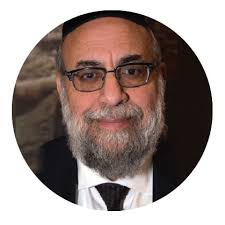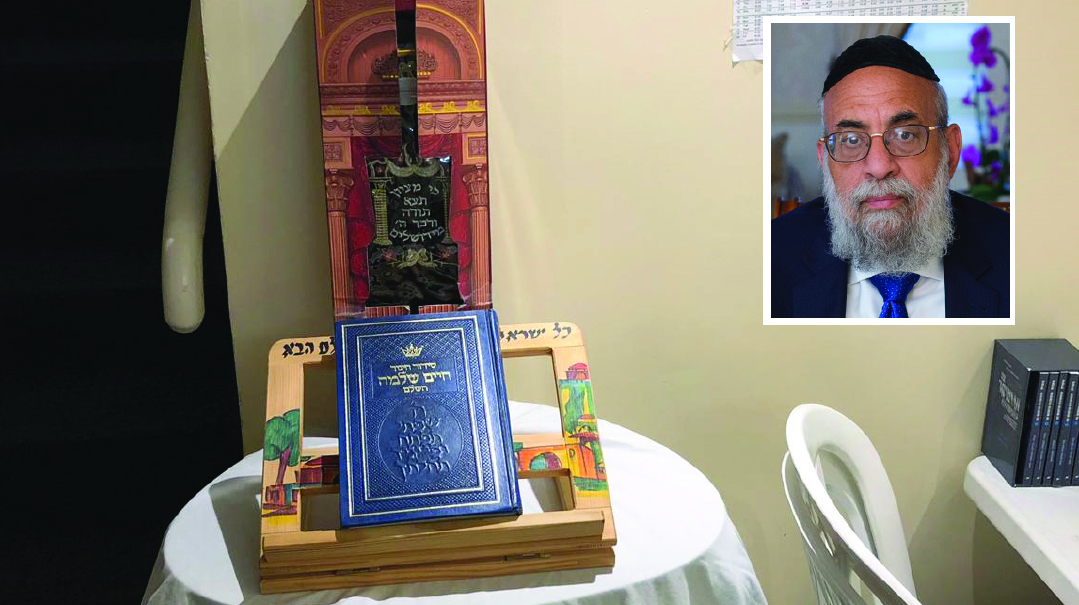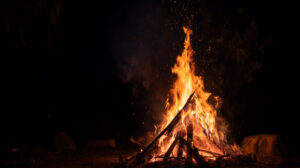Going the Extra Mile

When good enough isn't good enough

As committed Torah Jews, we all strive to do what is right and what is required of us. Some do more, some less. It’s probably fair to assume that most of us are somewhere in the middle. However, we need to ask ourselves the question: Is it enough to do just what is required of us?
The ArtScroll biography of Rabbi Meir Zlotowitz records an anecdote about the famed Kopyczynitzer Rebbe, Rav Avraham Yehoshua Heschel ztz”l. The Rebbe had finished making his Pesach matzos and gave a generous tip to a worker at the bakery. When the Rebbe returned to the bakery a few days later to bake his special Erev Pesach matzos, he gave the same worker another tip and said, “This is l’kavod Yom Tov.”
The worker protested, “The Rebbe was already yotzei.”
The Rebbe looked at him and said, “‘Ich bin nisht gekimen ohf der velt yotzei tzi zein [I didn’t come down to this world just to be yotzei].”
How do we determine if we are “just yotzei” Yidden or not? What yardstick should we use to make that measurement? Stories abound about our gedolim, past and present, who did much more than was required of them. Should they be our yardstick? Or do we put them on a spiritual pedestal that elevates them out of our reach?
If we need inspiration to go that “extra mile,” beyond the minimum that is required of us, we need look no further than a pasuk in Megillas Rus that we all read this past Shavuos.
A difficult aspect of the story of Rus that needs clarification is what made Naomi’s two dedicated daughters-in-law choose different paths. Both pleaded with Naomi to allow them to remain with her. Numerous times they begged, and each time Naomi refused, until finally Orpah bade her farewell and Rus clung to her. What changed between Orpah and Rus?
Rav Boruch Mordechai Ezrachi explains in Bircas Mordechai that the answer lies in the word misametzes (1:18), which conveys striving, determination, steadfastness: “Vateire ki misametzes hi laleches itah — and Naomi saw that Rus was striving to go with her.” Rus showed Naomi more effort and commitment to remain with her, and that made all the difference. That extra effort rewarded her with a grandson, Dovid Hamelech.
Every G-d-fearing Jew understands full well that the directive in the Mishnah — that the world stands on three things: Torah, avodah, and gemilas chasadim — is our calling card. The introduction to Mesilas Yesharim explains that it is our chovaso b’olamo, our obligation in this temporal world, to fulfill these three obligations. But what should our motivation be? Just to be “yotzei”? Or to go that extra mile in these three areas?
I would like to suggest that maybe our primary focus should not be on looking for role models from previous generations, but rather for role models who can be found among our neighbors and friends. The stories of commitment to Torah learning from the gedolim of yesteryear are legendary. But what about a contemporary rav and outstanding talmid chacham who was the quintessential role model of humility?
A few years ago, Rav Yitzchok Knobel received a call from his longtime daf yomi chavrusa, Rav Shlomo Teitelbaum z”l of Kew Gardens, who reported that he had suffered a stroke and was in Jamaica Hospital.
Rav Knobel asked, “Rav Shlomo, if you had a stroke, how is it that you’re talking to me?”
Rav Teitelbaum responded, “I’m only paralyzed from the neck down, and I’m waiting for the test results to come back. Maybe you’d like to come down so we can learn?”
Rav Knobel did just that.
We are all committed to learning on some level. Some of us commit to the rigorous daf yomi schedule, and some even do so very early in the morning. But is our learning just to be “yotzei”? When we see, in front of our eyes, someone from our own community who had such dedication to learning Torah, it should bring us to contemplation and soul-searching.
In regard to avodah, we are all committed to tefillah with a minyan, wherever we find ourselves. For some of us, tefillah b’tzibbur is important enough that vacations and flights are scheduled around times for minyanim. Anyone who ever had to say Kaddish for a loved one truly understands what it means to plan one’s day around the minyanim scheduled in his area.
However, my neighbor Shalom Vegh recently celebrated an impressive milestone: never missing even one minyan over the span of 15 years. He is not a person who sits in one place; on the contrary, he is constantly traveling, but he always plans his itinerary around minyan times and locations.
Then, several years ago, Shalom went that extra step that defined him as a Yid who is not just here to be yotzei. He had planned a family trip to Eretz Yisrael, leaving on a Delta flight at night that would require him to daven Shacharis and Minchah on the plane. As he had done so many times in the past, as the passengers boarded, he scouted them out to try to get at least ten commitments to join a minyan. That particular flight was filled with Christian tourists, which meant he encountered difficulty in finding ten observant Jewish men.
As the plane filled up, Shalom began to approach even the non-frum Israelis to ask if they would join his minyan (promising some a monetary reward), but he still had only nine. As the flight crew prepared to close the doors, he made the snap decision to exit the plane, arranging with his wife and children to fly on without him. He planned to run catch an El Al flight leaving a little later. He knew he would be forfeiting the money spent on his Delta ticket, and he would have to buy an El Al ticket. But it didn’t make a difference to him, because davening with a minyan was essential to his avodah. As he was about to exit the Delta flight, a Jewish male passenger boarded at the last minute, and now Shalom had his minyan.
This commitment to tefillah b’tzibbur is not just something to admire; it is something by which to measure ourselves and learn from.
Then comes the third pillar, chesed. Every Yid is a baal chesed — it’s in our DNA. Chazal say a Jew not involved in chesed on some level has to have his yichus investigated. A primary aspect of chesed is hachnassas orchim. We all host guests in our homes, and some even offer their homes for others to stay in while they are away.
But do we perform chesed on a level higher than just to be yotzei? Here is an example of a person who goes one step further. In the interests of full disclosure, this person also happens to be my mechuteneste, and her name is Miriam Tress. While the name Tress is synonymous with chesed, there is another level here as well. For decades in Monsey, it was widely known that for anyone making a simchah or needing a house to stay in, the Tress home was always available. The same practice continues in the new Tress home in Lakewood. Dozens of families have enjoyed the Tress home without even meeting their hosts.
One Shabbos, Miriam Tress was hosting a women’s kiruv shabbaton (as she had on many occasions), and she noticed one woman who seemed to feel very much out of place. It was her first time at such an event, and she didn’t know anyone, so Miriam began to converse with her. After finding out that the woman was not married and had no family to speak of, Miriam invited her to be her roommate in her own bedroom for Shabbos. Extending such an invitation to a complete stranger in need of a friend, as if she were a close relative, was doing chesed on a level higher than just to be yotzei. This guest felt so welcomed and accepted that she still speaks about it years later. There is much for us to learn from in going that extra mile for chesed.
These are some examples of so called “regular people” like you and me, who, like the Kopyczynitzer Rebbe mentioned earlier, understand full well that we were put into this world to maximize our dedication and commitment to whatever path we choose to accept upon ourselves. I would like to offer one more example that doesn’t come from a conventional source, but rather from three young boys who live in Shaarei Chesed in Yerushalayim.
As I continue to heal, baruch Hashem, from my miraculous Covid experience, I have been participating in many simchahs throughout the community, and wherever I go, I meet people who tell me that they davened for my refuah. Many times I don’t even know who these people are, yet I respond to everyone the same and thank them for their tefillos. However, there were three young boys, ages twelve, ten, and nine, who took their tefillos for me to a entirely different level.
When word spread of my illness, good friends in Eretz Yisrael, the Isaacs family from Shaarei Chesed mobilized their whole household to daven on my behalf. With schools closed due to Covid, their three young sons, Simcha, Yisrael, and Baruch, had an idea. They dedicated a room in the basement as “Beis Medrash L’refuah Sheleimah Larav Chaim Aryeh Zev Ginzberg.” All davening and learning that took place in that room would be in my zechus. The boys posted signs on the door to that effect, and set up a makeshift aron and shulchan.
For weeks and months, that “little shul” functioned with the sole purpose of providing zechusim from these young boys’ davening and learning — all for someone else who needed their tefillos. I was shown this room when I was zocheh to make a quick trip to Eretz Yisrael last December. I am not big enough to be able to say that the little makeshift shul in that basement will be uprooted and replanted in the Makom Hamikdash, as all shuls will be, but I can say that the incredible extra step that these boys took had a direct impact upon my miraculous recovery.
Since HaKadosh Baruch Hu always responds to His children middah k’neged middah, when we go the extra mile to show we’re doing something (anything) not only to be yotzei, then He will surely respond in kind and do the same for us as well. May that “extra mile” entail the coming of Mashiach b’karov, bringing an end to all of the suffering of Klal Yisrael, wherever they may be found.
This article is dedicated l’zecher nishmas Sara Chaya bas Rav Chaim Aryeh Zev
Rabbi Aryeh Z. Ginzberg is the rav of the Chofetz Chaim Torah Center of Cedarhurst and the founding rav of Ohr Moshe Institute in Hillcrest, Queens. He is a published author of several sifrei halachah, and a frequent contributor to many magazines and newspapers, where he writes the Torah hashkafah on timely issues of the day. He is also a sought-after lecturer on Torah hashkafah at a variety of venues around the country.
Originally featured in Mishpacha, Issue 865.
Oops! We could not locate your form.













